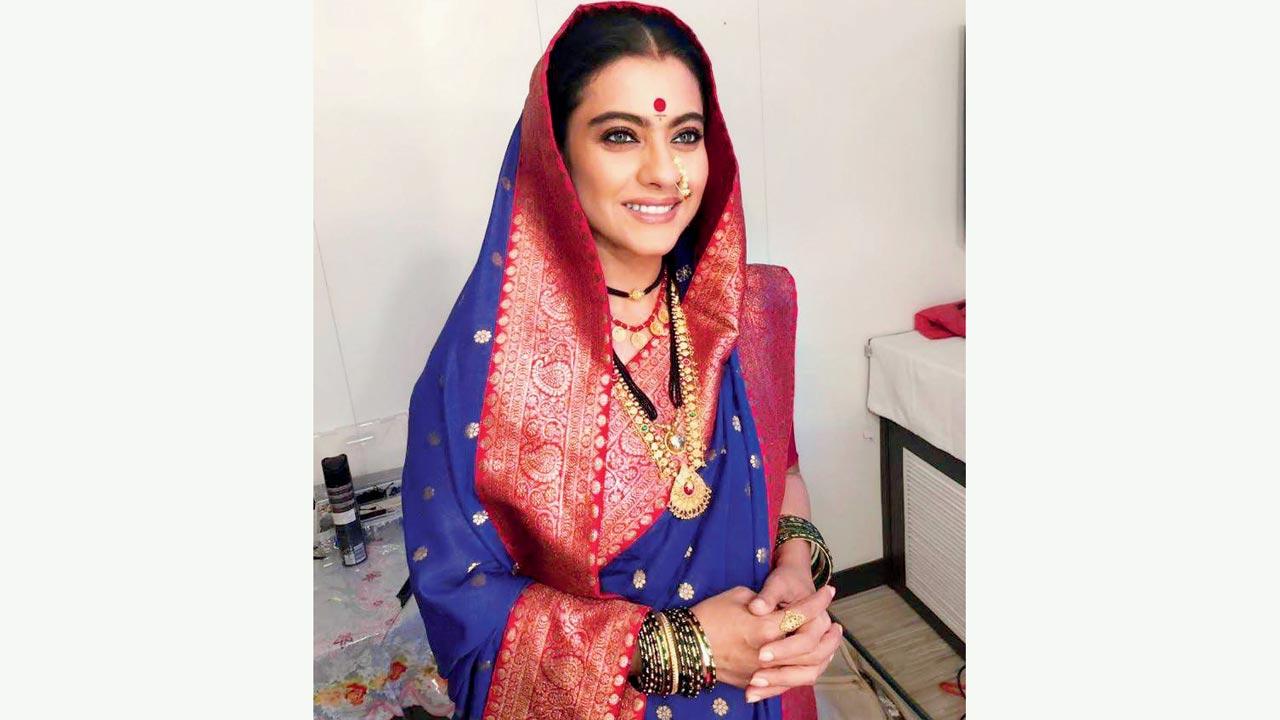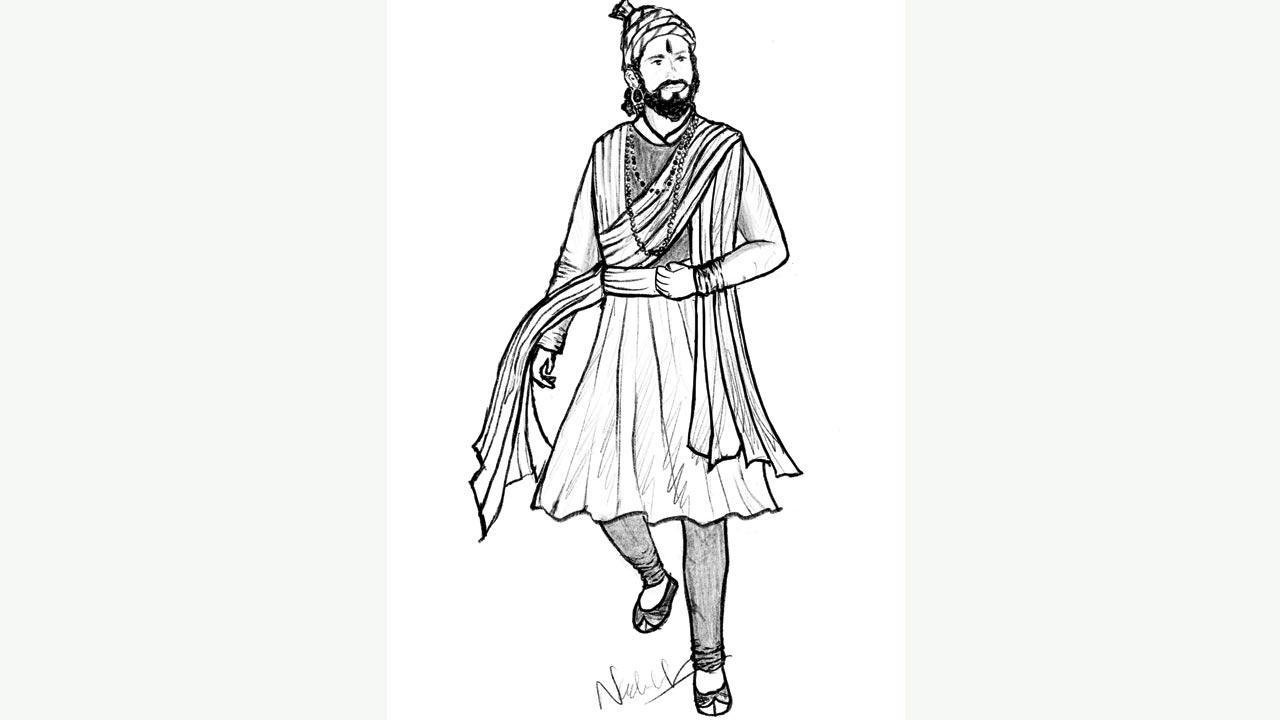We hunted down an old jeweller in Kolhapur whose ancestors made jewellery for Shivaji Maharaj’s family-Nachiket Barve
8:32 AM
Posted by Fenil Seta

Fashion designer Nachiket Barve sought authenticity while designing costumes for Tanhaji, but says there is no right or wrong in period films
Heena Khandelwal (MID-DAY; July 31, 2022)
It is imperative to get the world of the film or the universe of the director right,” says fashion designer Nachiket Barve, recipient of this year’s 68th National Film Award for his costumes in the period drama Tanhaji: The Unsung Warrior.
Calling the honour “surreal”, he says that while several factors play an important role in period films, restraint is the key to getting it right. “The film Gandhi [1982] won an Oscar for costume design,” he reminds us. “It largely showed people wearing khadi, but Bhanu Athaiya’s genius and restraint stood out for the jury.”
For Tanhaji, Barve spent close to two years on research, visiting several museums such as the Kelkar Museum in Pune, Salar Jung Museum in Hyderabad and The Victoria and Albert Museum in London. “It was important to understand what would or wouldn’t be acceptable as authentic to that period, while ensuring it works for the cinematic view and aligns with the filmmaker’s vision.”
“It was also important to practise restraint. My eponymous label is quite luxurious; it specialises in surface embellishment. However, I stayed away from doing so for the film as it would have been historically inaccurate. For Kajol’s character, Savitribai Malusare, Shivaji Maharaj’s subedar Tanhaji’s wife, the focus had to be on her social status and the kind of textiles she would have worn, and then bring them to life. Ajay Devgn and Kajol may be ‘hero’ and ‘heroine’, but they were playing a warrior and his wife [in the film]. The real royalty was Shivaji Maharaj, played by Sharad Kelkar,” says 41-year-old Barve.
He also delved into geography and weaves of that period while selecting fabrics. “At the time, the Maratha empire stretched all the way from Karnataka to Madhya Pradesh and beyond. So I sourced textiles from across these states, and put them together for Sharad in a manner that looked authentic and dignified. He recently told me that a compliment he gets often is that his was the rendition closest to what Shivaji Maharaj must have looked like which is so flattering.”
For Devgn, they used hand-spun khadi, which would have been the textile of choice at the time, and relied on natural dyes. “We had weavers from Dharwad to weave nauvari sarees in pure cotton for Kajol. Instead of roses in her hair, which would have been beautiful but not authentic, we used yellow chrysanthemum flowers because they are indigenous and used kumkum instead of stick-on bindis, which would been the practice at the time.”
While it was tempting to get a jewellery brand on board, Barve says that the director of the film wanted to create an authentic world. “We hunted down an old jeweller in Kolhapur whose ancestors made jewellery for Shivaji Maharaj’s family. They had old moulds which we used to make pure gold jewellery for the film to stay authentic to that period. We also kept in mind that ornaments would have been worn according to the occasion, and we stuck to that instead of covering our heroines in gold from head to toe,” he shares, adding that he was also mindful of functionality. “There were many fight sequences, so we constructed garments keeping [freedom of] movement in mind. We ensured shoes were comfortable enough to run in.”
When asked what costume designers are likely to get wrong when designing for period dramas, Barve observes, “There is nothing someone can prove or disprove; it’s all about creating a cinematic universe. The same subject can be treated differently by different directors. Ultimately, it is his vision and there needs to be a creative synergy between the director, costume designer, DOP [director of photography] and actors for this world to come alive.”
Would he agree to cheat to help the director achieve his cinematic dream? “I would have to marry knowledge with the style of the director to ensure that the costumes sit seamlessly in the universe of his vision.”
Barve’s next two films as a costume designer are also period dramas—the multilingual Har Har Mahadev and Adipurush. The latter, made by Om Raut, casts Prabhas as Ram, Kriti Sanon as Sita, and Saif Ali Khan as Ravan. “It is a take on Ramayan, a tale we all know. The brief came from the director and once I understood his world, we started researching material, colour palette, and [thinking about] what we wanted the characters to embody,” he says.
Quite unlike designing for Ani… Dr Kashinath Ghanekar, a 2018 Marathi movie, which had pictorial references and thus, very little scope of going wrong, Adipurush, says the fashion designer, is set further back in history and offers no reference points. But Barve is more than ready for the challenge.

Barve found weavers from Dharwad to weave nauvari sarees in cotton for Kajol’s character

A sketch by Barve detailing the costume for Chhatrapati Shivaji Maharaj, played by Sharad Kelkar in Tanhaji
This entry was posted on October 4, 2009 at 12:14 pm, and is filed under
Adipurush,
Ajay Devgn,
Interviews,
Kajol,
Kolhapur,
Nachiket Barve,
Nachiket Barve interview,
Sharad Kelkar,
Tanhaji: The Unsung Warrior
. Follow any responses to this post through RSS. You can leave a response, or trackback from your own site.
Subscribe to:
Post Comments (Atom)
Post a Comment